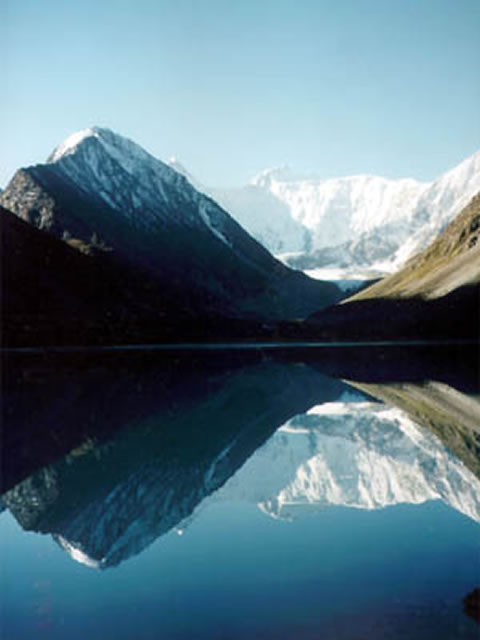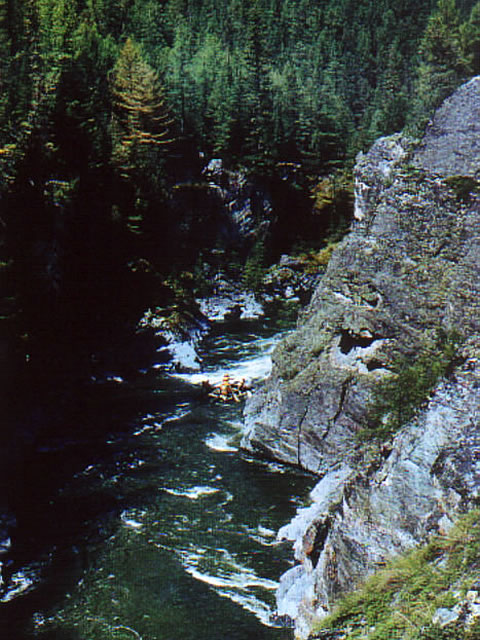Source google.com.pk
Altai Mountains
Dividing North from Central Asia, desert from grassland, taiga from mountain steppe, the Altai Mountains have functioned for thousands of years as a homeland for the emergence of hunting, herding, and nomadic cultures of Eurasia. Archaeology in the Altai thus reflects the evolution of human culture from the Paleolithic Period through to the present.
The archaeology and landscape considered in this project are located within Bayan Ölgiy, a mountainous aimag in the far northwest of Mongolia. To its northwest, the region shares a boundary with the Altai Republic of Russia; to the southwest, it abuts northern China’s Xinjiang province. The long eastern side of the resulting triangle can be drawn along the right bank of the north-flowing river, Sagsay Gol and continued up through the dry valleys north of the administrative centers (sum) of Sagsay and Ulaan Khus to the Tsagaan Nuur basin.
This landscape, the highest in Mongolia, has been home to hunters and herders beginning early in the Bronze Age. By the Late Bronze Age, horse-dependent semi-nomadic cultures began to appear, eventually spreading west from the Altai to dominate the Eurasian steppe. This region of the Altai is, also, the probable homeland of the iron-working Türks, who dominated Eurasia in the late first millennium of our era.
Mongolia | Altai Region
Monuments in the Mongolian Altai can be divided into a variety of types, each with its own sub-types and probable function. These include khirigsuur, mounds, standing stones, dwellings and related lines, circles, and Turkic memorial structures (including enclosures, Turkic image stones, false image stones, and balbal). Altars may include some of the structures already mentioned as well as several of a distinctive variety. Tamga and inscriptions are here considered together with petroglyphs.Cultural Landscape : General Discussion
The World Heritage Center defines a Cultural Landscape as one intentionally designed and created by human action, as one that has evolved naturally in relationship to traditional social ways of life, or as one that has associative value. Within this last category, the landscape is endowed with “powerful religious, artistic or cultural associations…”(UNESCO World Heritage Center: Cultural Landscape). Another way of thinking about Cultural Landscapes is to consider the definition offered by the geographer, Carl Sauer: a cultural landscape is one that has been “… fashioned from a natural landscape by a cultural group. Culture is the agent, the natural are the medium, the cultural landscape is the result" (Sauer 1925).
Within mountainous Bayan Ölgiy, the deliberate placement of ancient surface monuments with reference to specific landscape features and directions results in the expansion of the monuments’ expressive force. Conversely, the intentional placement of monuments calls attention to specific features in the landscape and to the cardinal directions, thereby reinforcing a sense of their signifying power. In both respects, setting and orientation indicate ancient intentionality and the existence of cultural landscape within a synchronic dimension.
We find, also, that monuments frequently reflect their builders’ awareness of what occurred at an earlier age at that site. This awareness is reflected in the overlay of monuments of different periods and in the reuse of stones from one period and monument to the next. In this respect, the cultural landscape of this region, also, exists within a diachronic dimension, suggesting a sense of cultural memory.
While we do not know what the interrelationships of monuments and natural features or directionality signified, we can observe regular patterns in their occurrence; and we can conclude that ancient people of the Bronze and Iron Ages understood their existence.





Altai Mountains
Dividing North from Central Asia, desert from grassland, taiga from mountain steppe, the Altai Mountains have functioned for thousands of years as a homeland for the emergence of hunting, herding, and nomadic cultures of Eurasia. Archaeology in the Altai thus reflects the evolution of human culture from the Paleolithic Period through to the present.
The archaeology and landscape considered in this project are located within Bayan Ölgiy, a mountainous aimag in the far northwest of Mongolia. To its northwest, the region shares a boundary with the Altai Republic of Russia; to the southwest, it abuts northern China’s Xinjiang province. The long eastern side of the resulting triangle can be drawn along the right bank of the north-flowing river, Sagsay Gol and continued up through the dry valleys north of the administrative centers (sum) of Sagsay and Ulaan Khus to the Tsagaan Nuur basin.
This landscape, the highest in Mongolia, has been home to hunters and herders beginning early in the Bronze Age. By the Late Bronze Age, horse-dependent semi-nomadic cultures began to appear, eventually spreading west from the Altai to dominate the Eurasian steppe. This region of the Altai is, also, the probable homeland of the iron-working Türks, who dominated Eurasia in the late first millennium of our era.
Mongolia | Altai Region
Monuments in the Mongolian Altai can be divided into a variety of types, each with its own sub-types and probable function. These include khirigsuur, mounds, standing stones, dwellings and related lines, circles, and Turkic memorial structures (including enclosures, Turkic image stones, false image stones, and balbal). Altars may include some of the structures already mentioned as well as several of a distinctive variety. Tamga and inscriptions are here considered together with petroglyphs.Cultural Landscape : General Discussion
The World Heritage Center defines a Cultural Landscape as one intentionally designed and created by human action, as one that has evolved naturally in relationship to traditional social ways of life, or as one that has associative value. Within this last category, the landscape is endowed with “powerful religious, artistic or cultural associations…”(UNESCO World Heritage Center: Cultural Landscape). Another way of thinking about Cultural Landscapes is to consider the definition offered by the geographer, Carl Sauer: a cultural landscape is one that has been “… fashioned from a natural landscape by a cultural group. Culture is the agent, the natural are the medium, the cultural landscape is the result" (Sauer 1925).
Within mountainous Bayan Ölgiy, the deliberate placement of ancient surface monuments with reference to specific landscape features and directions results in the expansion of the monuments’ expressive force. Conversely, the intentional placement of monuments calls attention to specific features in the landscape and to the cardinal directions, thereby reinforcing a sense of their signifying power. In both respects, setting and orientation indicate ancient intentionality and the existence of cultural landscape within a synchronic dimension.
We find, also, that monuments frequently reflect their builders’ awareness of what occurred at an earlier age at that site. This awareness is reflected in the overlay of monuments of different periods and in the reuse of stones from one period and monument to the next. In this respect, the cultural landscape of this region, also, exists within a diachronic dimension, suggesting a sense of cultural memory.
While we do not know what the interrelationships of monuments and natural features or directionality signified, we can observe regular patterns in their occurrence; and we can conclude that ancient people of the Bronze and Iron Ages understood their existence.
Altai Mountains

Altai Mountains

Altai Mountains

Altai Mountains

Altai Mountains

Altai Mountains

No comments:
Post a Comment